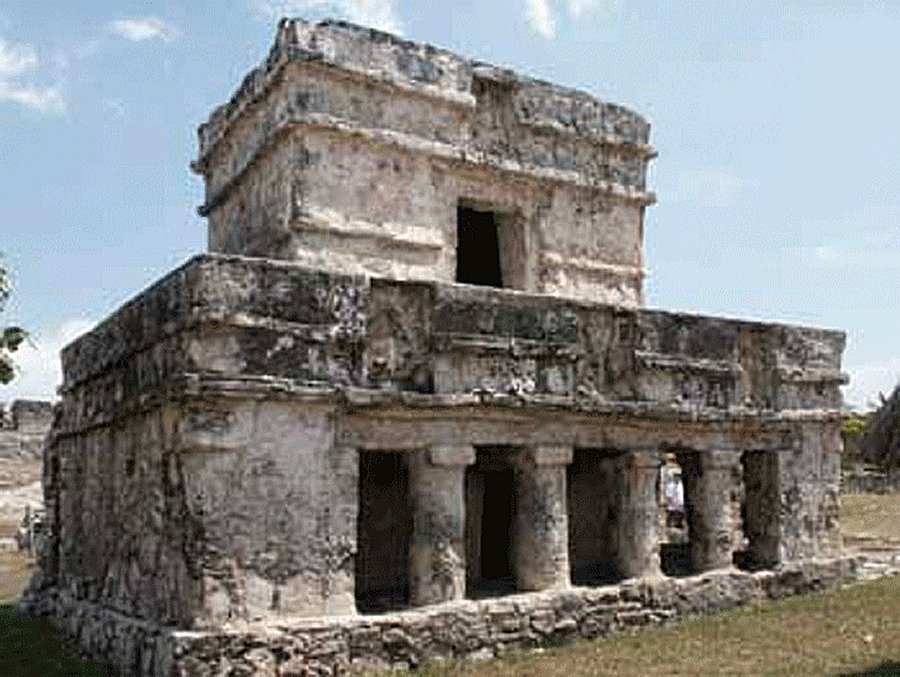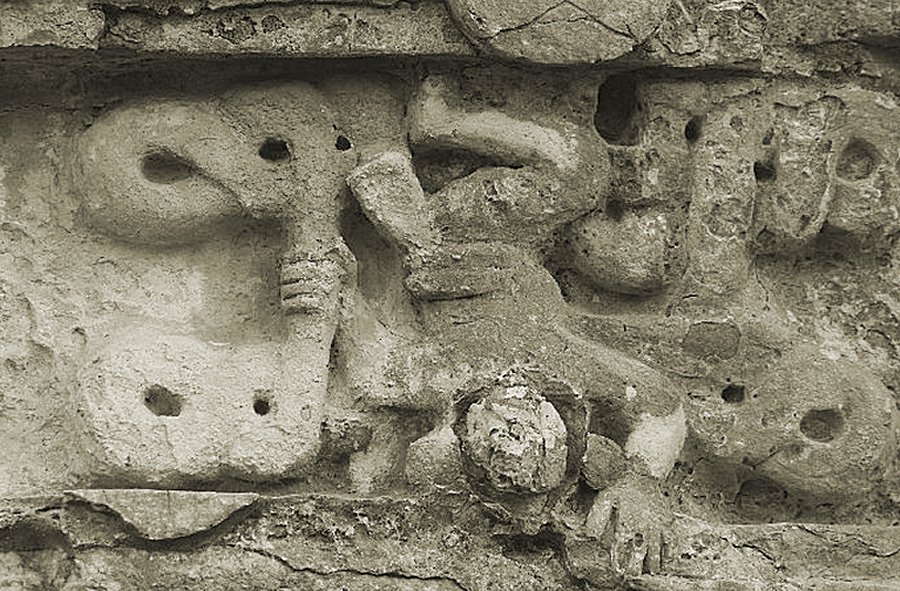MessageToEagle.com – Tulum is a pre-Columbian Mayan walled city located on 12-meter (39 ft) tall cliffs along the east coast of the Yucatán Peninsula on the Caribbean Sea in Mexico.
Tulum – one of the last cities built and inhabited by the Maya – was known in the past as “City of Dawn” (‘Zama’) because it faces the sunrise, but the site’s name ‘Tulum’ is also the Mayan word for ‘fence, wall or trench’.

The city had a crucial strategic location; on one side, ancient Tulum was protected by steep sea cliffs and on the landward side by a massive wall, approximately 3–5 meters (9.8–16.4 ft) high, about 8 m (26 ft) thick and 400 m (1,300 ft) long on the side parallel to the sea. The part of the wall that ran the width of the site was slightly shorter and only about 170 meters (560 ft) on both sides.
Ancient ruins of Tulum give evidence of strong influence of Chichen Itza, one of the largest Maya cities referred to in later literature of Mesoamerica.

Tulum – inhabited by approximately 1,000 to 1,600 people, flourished between the 13th and 15th centuries; it was a flourishing trading sea port having access to both land and sea trade routes.
The murals discovered at Tulum depict ocean-going canoes arriving and leaving the port city. Obsidian trade was developed with central Mexico, copper arrived from Honduras and full-lasted canoes with jade were often seen coming from Guatemala and others transported cacao beans from the State of Tabasco, Gulf of Mexico.
The goods were later transshipped and sent south and north.
Tulum managed to survive about 70 years after the Spanish began occupying Mexico. When the first Spanish expedition arrived at Tulum on May 7, 1518, they saw the walled sea port with massive watchtowers in the southwest and northwest corners, and beautiful temples painted in blue and red.
Tulum was also an important sacred site with unique small-sized temples with flat roofs.
Tulum’s important landmark is the so-called Castillo, which is 7.5 m (25 ft) tall and constructed on a previous building. Built in stages, the Castillo was originally and covered with stucco and painted red. El Castillo has three niches and in the central niche above the doorway, there is a sculpture of the descending god.
Numerous depictions in murals and other works discovered around Tulum provide insight into religious beliefs of the city’s inhabitants, who worshiped the Diving or Descending god.
This deity was depicted in two other major buildings of Tulum, the Temple of the Frescoes and in the Temple of the Diving God located in the central area of the city.
See also:
Secretful Diablo Pyramid Sheds Light On The Mysterious Maya Sun God With Many Faces
El Mirador: Ancient Pyramids Hidden In The Lost City Of The Maya
Lamanai, Belize: One Of The Largest And Oldest Maya Cities Dated To 1500 BC
More Fascinating Ancient Mysteries
The Temple of the Frescoes is decorated with niches occupied by figurines of the Maya “diving god” or “descending god”.
This deity is also depicted in the Temple of the Diving and above the entrance in the western wall of the temple, there is a well-preserved stucco figure of the “diving god”.
Photo credit: Foto Leticia Staines Cicero, 1994.
Tulum’s Temple of the Frescoes was used as an observatory for tracking the movements of the sun. The ancient Maya were accomplished astronomers; they also focused their attention on the movements of planets and stars. The movements of the planet Venus had special meaning for these ancient people. Tables that mark Venus’ position throughout the year are recorded in codices, ancient Maya books and on monuments throughout the Maya kingdoms as well.
Another artifact from Tulum is an early classic stela inscribed with the date – 564 AD – probably the earliest archeological evidence of human occupation in the area.
Mysteriously, by the end of the 16th century, the site was abandoned completely.
Copyright © MessageToEagle.com All rights reserved. This material may not be published, broadcast, rewritten or redistributed in whole or part without the express written permission of MessageToEagle.com
Expand for references





